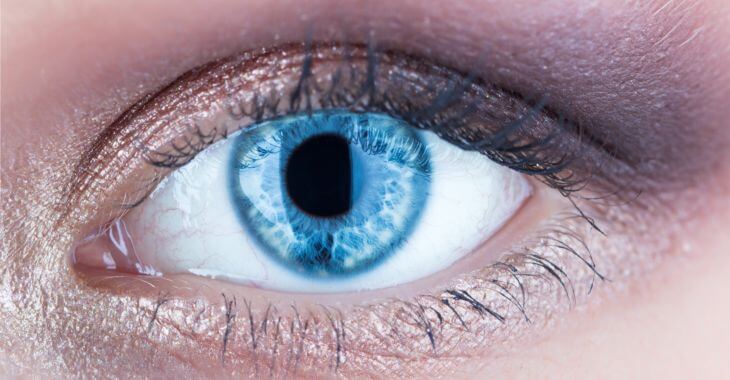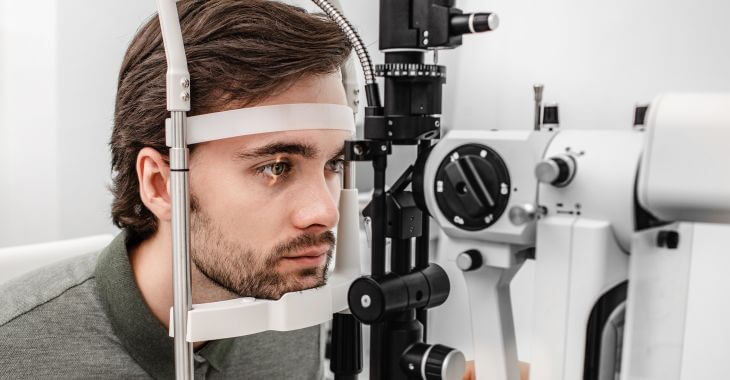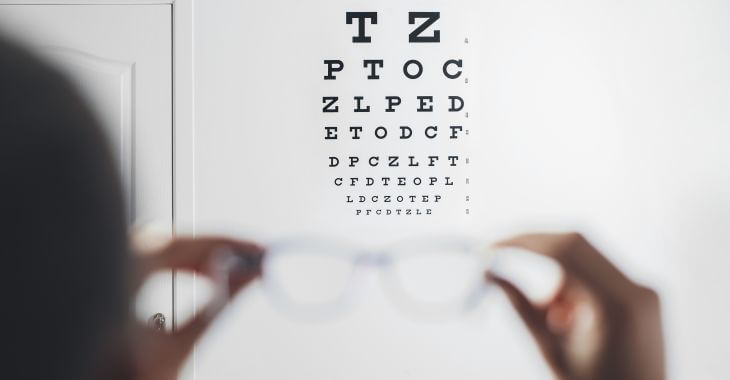Scar on Eye: Causes, Symptoms and Treatments

Scar tissue occurs whenever tissue is damaged and needs repair. While you may be able to see scars on the skin, there is scar tissue created internally when there is an injury. Scar tissue on the eye or corneal scarring are results of damage to the eye. Here are the causes, symptoms and treatments for a scar on the eye.
The eye has multiple components that can be injured. The cornea and retina can be damaged from trauma, disease, surgery or visual aids like contacts. Even aging can contribute to damage to the eyes that cause scar tissue on the eye. Two of the most common types are corneal scarring and macular puckers.
What Is Corneal Scarring?
The cornea is the outer, clear layer of the eye that protects the eye and helps with vision focus. The cornea is the area of the eye that is most vulnerable to damage from external factors. Corneal scarring can occur from scratches to the eye and many other causes, including:
- Injury
- Infections
- Ulcers
- Diseases that affect the outer eye
- Shingles
When there is scar tissue on the eye’s outer surface, it can be very irritating and painful. You may feel like something is in your eye. Your eye may swell and excessively tear. Vision may be blurred with sensitivity to light. If you have these symptoms, you should see an eye doctor for diagnosis.
What Is a Macular Pucker?
About 80% of the eye tissue is made from vitreous, a gel-like substance that helps maintain the round appearance. The vitreous has fibers that attach to the retina. As part of the aging process, the vitreous can shrink away from the retina. This is called vitreous detachment, which can result in a scar on the eye.
A macular pucker is scar tissue that occurs on the retina from vitreous detachment, which can impact vision. When the vitreous pulls away, it can damage the retina surface and stimulate scar tissue. When the scar tissue contracts, it can result in a pucker on the retina, but no impact on vision unless it covers the macula.
The macula is the center of the retina and is needed for detailed vision. If the scar tissue from vitreous detachment forms over the macula, it can impact central vision. Some of the symptoms of a macular pucker include:
- Blurry vision
- Difficulty reading fine print
- Blind spots or gray areas
- Lines appear wavy
A macular pucker can impact vision and does not respond to most conservative treatments. Many people with this type of scar tissue on the eye do not have any invasive treatments. However, severe macular pucker cases may require surgery.
Treatment for Corneal Scarring
If you have corneal scarring, you may or may not need medical treatment. Your eye doctor can examine your eye and determine the best course of action to protect your eye, relieve your symptoms and restore your vision. For severe cases of corneal scarring, the following treatment may be recommended.
- Corrective Devices
- Mild corneal scarring may be corrected with glasses or contact lenses. Gas permeable contacts may be recommended to restore the cornea shape and surface to correct vision and provide a protective outer layer for the eye.
- Laser Treatment
- Laser light energy can be used to remove scar tissue and improve vision. This surgery is minimally-invasive and can precisely alter corneal scarring.
- Cornea Replacement
- Donor cornea or artificial cornea tissue can be used to replace the damaged portion of the outer eye. This surgery can restore the eye and improve vision for many people with severe cornea damage and scar tissue on the eye.
Treatment for Macular Pucker
When a macular pucker causes significant vision problems, surgery may be recommended. The goal is to reduce the vitreous from pulling on the retina and to remove the scar tissue to stop the “puckering” affecting the retina. This is surgery is called a vitrectomy, a minimally invasive procedure.
During a vitrectomy, some of the vitreous may be replaced with a saline solution. The scar tissue is carefully removed to smooth the wrinkle on the retina. This surgery can improve vision – it is unlikely vision will return to normal, but outcomes usually reduce distorted vision.
Prevention of Scar Tissue on the Eye
Not all conditions that cause injuries or eye scars can be prevented, but there are many that can. Using protective eye wear when playing sports or working with mechanical devices can protect your eyes. You should always follow your eye doctor’s recommendations when wearing contacts, removing and cleaning daily.

There are many diseases and accidents that can result in a scar on eye. Many times, scar tissue on the eye will resolve on its own and will not permanently impact vision. If you have symptoms related to corneal scarring or a macular pucker, see your eye doctor for diagnosis and treatment options.
The information provided on this website, including text, graphics, images, and other materials, is intended solely for informational purposes and should not be used as a substitute for professional medical advice, diagnosis, or treatment.



)